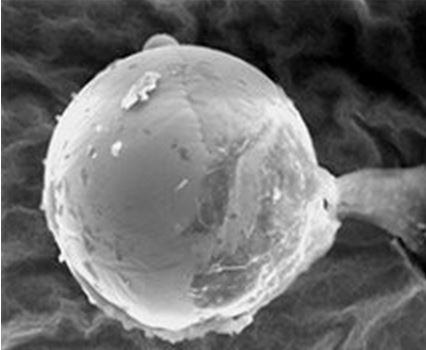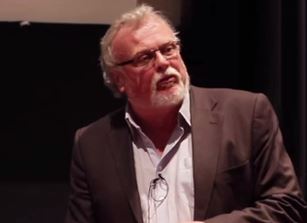A British astrobiologist found a tiny metal globe full of biological material he and his colleagues believe could be an alien seed of life capsule that may have been sent here deliberately. Initially, they wondered whether it contained an infectious agent.
None of the scientists have a clue where the sphere comes from. They are suggesting it might contain the precursors of life – a series of pre-cellular life forms that eventually lead to living cells.
Nothing like it has ever been discovered before and suggests not only that alien may life exist, but also that advanced alien civilizations could be watching us.

Even though the findings have been published in the Journal of Cosmology, no other scientists have corroborated Prof. Milton Wainwright’s and team’s conclusions. Many in the scientific community question the robustness of the journal’s peer-review process.
We know that genetic material can survive in outer space. In 2011, Swedish scientists sent a tiny “plasmid” – a genetic structure in a cell that can replicate independently of the chromosomes, such as a small circular DNA strand in the cytoplasm of a protozoan or bacterium – into space on the exterior of a TEXUS-49 rocket. It endured 1000°C and was still intact when it returned to Earth.
Professor Milton Wainwright and his team of scientists from the University of Buckingham Centre for Astrobiology and the University of Sheffield, both in England, wonder whether the tiny capsule may have some sinister purpose. Could it have been sent to our planet to infect the Earth?
According to Prof. Wainwright, the metallic sphere is made from titanium and vanadium and has a biological liquid that oozes from its center.

Among several theories he and his colleagues have put forward, one is that it could be a complete microorganism designed to propagate alien life here.
Prof. Wainwright said:
“It is a ball about the width of a human hair, which has filamentous life on the outside and a gooey biological material oozing from its centre. We were stunned when X-ray analysis showed that the sphere is made up mainly of titanium, with a trace of vanadium.”
“One theory is it was sent to Earth by some unknown civilisation in order to continue seeding the planet with life. Unless of course, we can find details of the civilisation that is supposed to have sent it in this respect it is probably an unprovable theory.”
The scientists found the mysterious sphere in dust and particulate matter they had gathered from the stratosphere (the second major layer of Earth’s atmosphere). Balloons had been sent 27 km into the air to collect debris from space.
The sphere landed on one of the sampler balloons and left a tiny impact crater, suggesting it had come in from outside at high speed.
The Express quoted Prof. Wainwright, who said:
“On hitting the stratosphere sampler the sphere made an impact crater, a minute version of the huge impact crater on Earth caused by the asteroid said to have killed off the dinosaurs.”
“This impact crater proves that the sphere was incoming to Earth from space, an organism coming from Earth would not be traveling fast enough when it fell back to Earth to cause such damage. This seems never before to have been found on Earth.”
The team is fairly certain the tiny ball came from space. It could have traveled a long distance on a comet.
How did life start on Earth?
While some astrobiologists believe life here started on Earth, others suggest the seeds of life could have been carried on an asteroid or comet.
Most respected scientists have said we cannot exclude the possibility of panspermia – the theory that life on the Earth could have come from chemical precursors of life or microorganisms present in outer space.
Professor Francis Crick, who was awarded the Nobel Prize for discovering the structure of DNA, once said we do not have enough evidence to support the claim that organisms were deliberately transmitted to Earth from intelligent extraterrestrials.
Interesting Related Article: “How Artificial Intelligence is Driving Distance Education“

